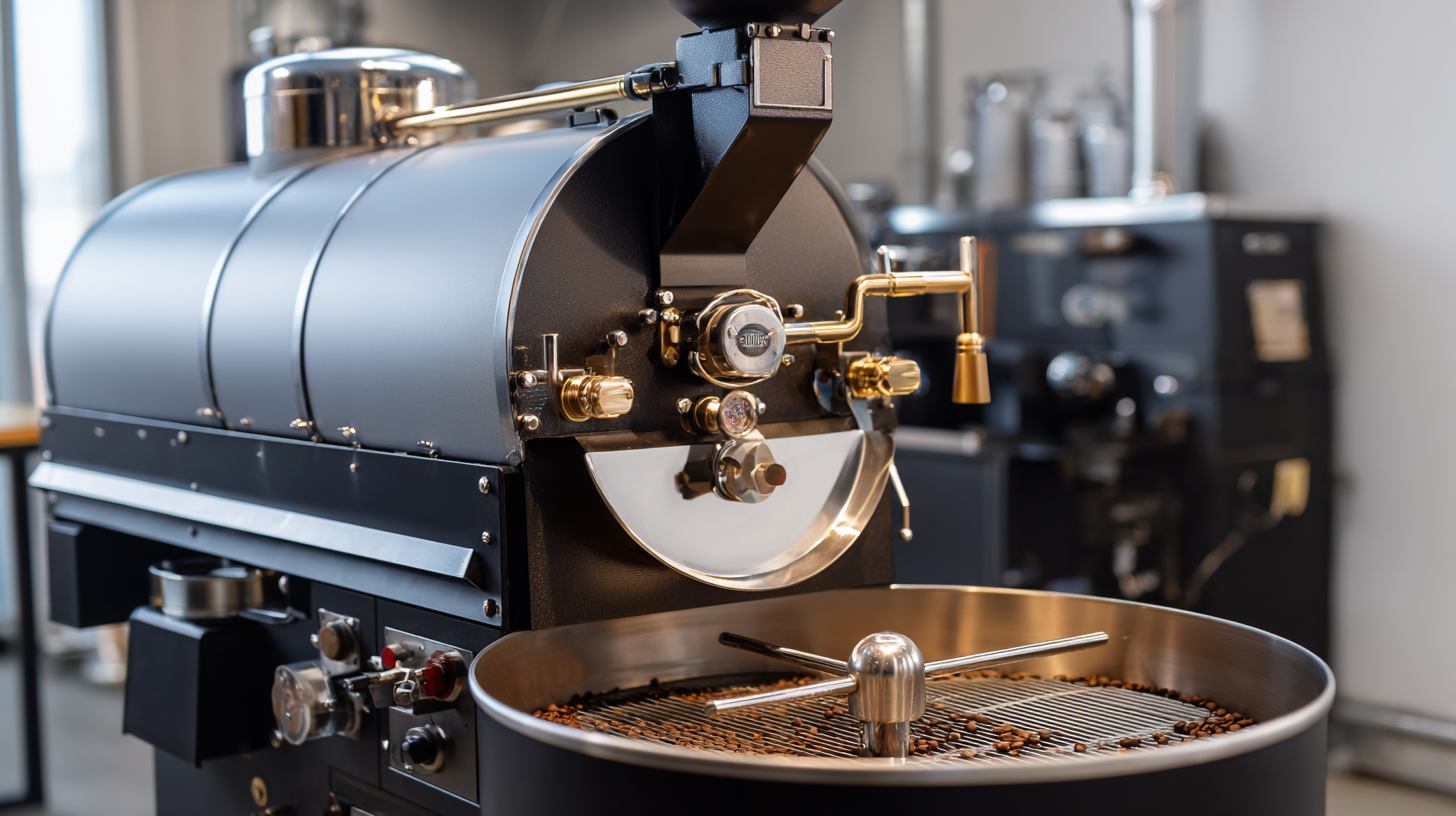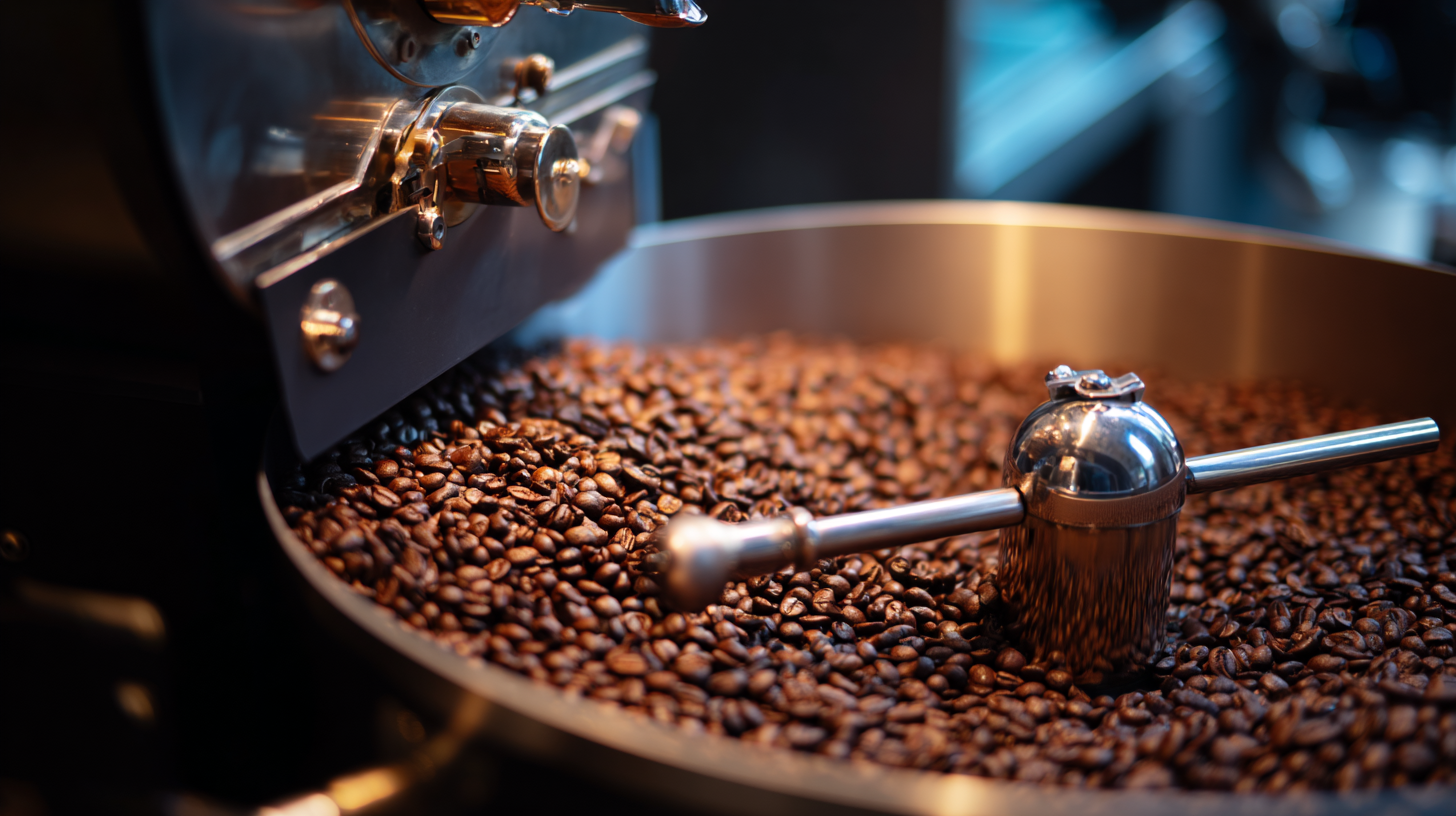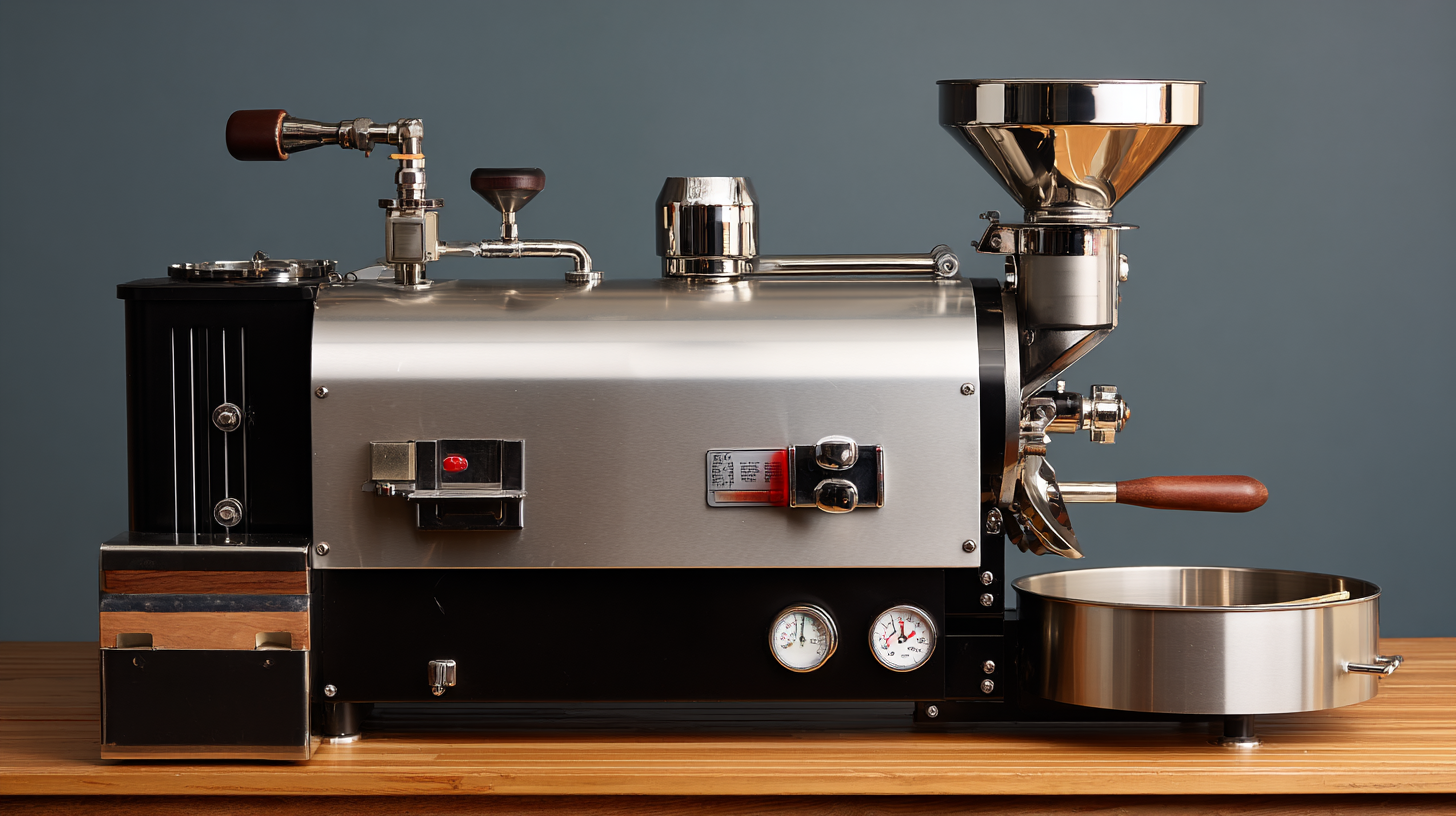Understanding Industry Standards: How to Choose the Best Home Coffee Roaster Machine for Your Needs
As coffee culture continues to flourish, the demand for high-quality coffee at home has seen a remarkable surge, with the global coffee roasters market projected to reach USD 1.5 billion by 2025, according to a recent report by Grand View Research. This has led many coffee enthusiasts to explore options available to them for a superior brew experience, ultimately directing their attention to the pivotal investment in a home coffee roaster machine. With various types of machines boasting unique features, it can be challenging to identify the best fit for individual needs and preferences.

Understanding industry standards and key factors—such as roast capacity, heat source, and user-friendliness—becomes essential for making an informed decision. This ultimate guide will explore all the necessary considerations needed to choose the perfect home coffee roaster machine, ensuring that coffee lovers can elevate their brewing game right in the comfort of their kitchens.
Advantages of Comprehensive After-Sales Service for Coffee Roasters
 When investing in a home coffee roaster, the importance of comprehensive after-sales service cannot be overstated. A reliable after-sales service ensures that any issues arising during your roasting journey can be addressed swiftly and efficiently. This support not only provides peace of mind but also enhances the overall user experience. Knowing that you have access to expert advice and assistance can make all the difference, particularly for newcomers to home roasting who may face challenges with machine settings or maintenance.
When investing in a home coffee roaster, the importance of comprehensive after-sales service cannot be overstated. A reliable after-sales service ensures that any issues arising during your roasting journey can be addressed swiftly and efficiently. This support not only provides peace of mind but also enhances the overall user experience. Knowing that you have access to expert advice and assistance can make all the difference, particularly for newcomers to home roasting who may face challenges with machine settings or maintenance.
Additionally, robust after-sales service can significantly extend the lifespan of your coffee roaster. Quality manufacturers often offer warranties and dedicated customer support that go beyond the initial purchase. This commitment to service helps users navigate potential pitfalls and maintain their machines in optimal condition. Whether it’s troubleshooting minor issues or getting timely repairs, having comprehensive support can prevent costly damages and keep your roasting process enjoyable and fulfilling. Ultimately, selecting a coffee roaster with strong after-sales service sets you up for a successful and satisfying coffee roasting experience.
Factors Affecting Repair Costs and Maintenance of Home Coffee Roasters
When considering the purchase of a home coffee roaster machine, understanding the factors that influence repair costs and maintenance is crucial. One primary aspect is the roaster's design and build quality. Higher-end models often feature durable materials and advanced technology that can minimize wear and tear, potentially lowering long-term repair costs. On the other hand, budget-friendly options may save you money upfront but could lead to higher maintenance expenses due to more frequent breakdowns.
Another significant factor is the availability of replacement parts and customer support. Some brands offer comprehensive warranties and easy access to spare parts, which can make repairs simpler and more affordable. Conversely, roasters from less established companies may not have readily available components, resulting in longer downtimes and increased costs for repairs. Furthermore, regular maintenance practices, such as cleaning and calibrating your roaster, can help prevent costly repairs in the future, ensuring your equipment stays in optimal condition for years to come. By considering these factors, you can make a more informed decision that aligns with your coffee roasting needs and budget.
Choosing a Roaster with Reliable Customer Support: What to Look For
When selecting a home coffee roaster machine, one critical aspect often overlooked is the quality of customer support provided by the manufacturer. According to industry reports, around 70% of consumers indicate that responsive customer service significantly enhances their overall satisfaction with a product. A reliable customer support system can assist you in troubleshooting issues, ensuring you achieve the perfect roast each time. Look for companies that offer multiple support channels, such as live chat, email, and telephone assistance, to cater to your needs effectively.
Moreover, consider the availability of resources such as user manuals, FAQs, and instructional videos. A 2022 survey revealed that users who had access to comprehensive resources felt more confident in using their coffee roasters, leading to a 30% increase in customer loyalty. Brands like Behmor and Hottop not only offer practical support but also foster communities through social media where enthusiasts can share tips and experiences. By prioritizing customer support, you can ensure your investment in a home coffee roaster machine leads to enjoyment and better coffee experiences.
Common Issues and Repair Challenges in Home Coffee Roasting Machines
Home coffee roasting machines have gained immense popularity among coffee aficionados, providing the ability to customize roast levels to personal preference. However, users often face common issues that can impact the quality of their coffee. According to a report by the Specialty Coffee Association, nearly 30% of home roasters experience inconsistent roast profiles, which can be attributed to factors such as uneven heat distribution and improper cooling mechanisms. These challenges can lead to underdeveloped flavors or burnt beans, significantly affecting the final brew.
Repair challenges also plague many home roasting machine users. A survey indicated that over 40% of home roasters reported issues with faulty temperature control systems, resulting in unpredictable roasting outcomes. Furthermore, maintenance is crucial; regular cleaning and calibration of the machine can prevent operational failures. For instance, neglecting to clean the chaff collector can lead to overheating, which not only compromises the roast but can also damage the machine. Overall, understanding these common issues and their underlying causes can help users make informed decisions when choosing and maintaining their home coffee roaster.
Understanding Industry Standards: How to Choose the Best Home Coffee Roaster Machine for Your Needs - Common Issues and Repair Challenges in Home Coffee Roasting Machines
| Feature | Description | Common Issues | Repair Challenges |
|---|---|---|---|
| Size | Compact options for small kitchens or larger machines for serious enthusiasts. | Limited capacity for larger batches; difficult to store. | Finding replacement parts for specific sizes can be challenging. |
| Heating Mechanism | Options include electric, gas, or infrared heating systems. | Inconsistent heating leading to uneven roasts. | Repairing electrical components requires specialized skills. |
| Roasting Capacity | Roasting 1 to 5 pounds of beans per batch, depending on the model. | Not enough capacity for frequent use; overloading can cause damage. | Balancing roasting batches may require trial and error and could lead to over-roasting. |
| Control Types | Manual vs. programmable controls for precision roasting. | Complexity of settings can be overwhelming for beginners. | Electronic control boards may fail and require specialized repairs. |
| Cooling System | Critical for stopping the roasting process quickly. | Inefficient cooling can lead to over-roasting after the batch is complete. | Cleaning and maintaining cooling fans can be cumbersome. |
Long-Term Cost Analysis: Maintenance vs. Initial Investment of Roasters
When choosing a home coffee roaster machine, understanding the long-term cost implications is critical. According to the Specialty Coffee Association, the initial investment for a high-quality home roaster can range from $200 to $2,000. However, the true cost of ownership often extends beyond this one-time purchase. Maintenance costs, which include components like replacement parts and cleaning supplies, can add up significantly over the machine's lifetime. Reports suggest that an average roaster owner may spend about $100 to $150 annually on maintenance, drastically affecting the overall budget for coffee enthusiasts.

In addition to maintenance, energy consumption should also be factored into the cost analysis. A study published by the Coffee Research Institute reveals that home roasting machines can consume anywhere from 1 kWh to 3 kWh per batch, translating to additional electricity costs of approximately $0.15 to $0.45 per roast, depending on local energy rates. Over a year, if a roaster averages two batches per week, this could lead to an extra $15 to $47 annually. By weighing these long-term costs against the initial investment, consumers can make informed decisions that best match their coffee roasting lifestyle and budget.


